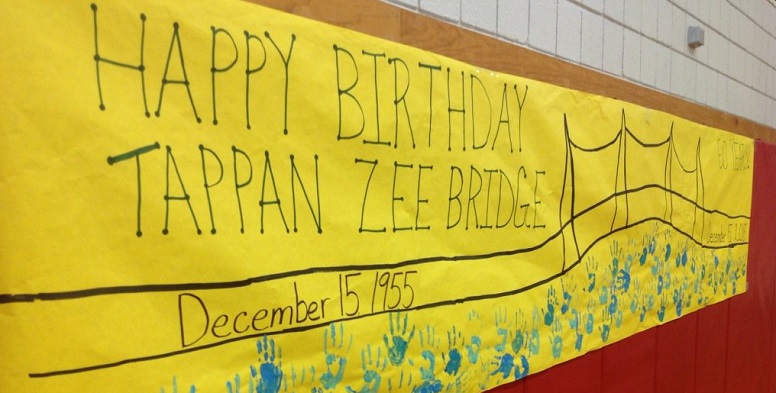The Tappan Zee Bridge turned 60 years old today. The bridge, purported by the New York State Thruway Authority to have been built to last only 50 years, has now officially chugged along for an additional decade.
Although there have been mixed messages about the safety of this aging span, there is little disagreement that the bridge has surpassed its useful life. We can’t say for sure exactly how many more birthdays the TZB will celebrate; the replacement bridge is more than 50 percent complete, and both spans are expected to be open in 2018.
What we do know is that the legacy of the TZB has been greater mobility for drivers, along with increased suburban sprawl, in the Lower Hudson Valley. In 1950, five years before the bridge was completed, the populations of Rockland and Westchester Counties were 89,276 and 625,816, respectively. By 1970, just 15 years after the bridge was completed, those numbers jumped to 229,903 for Rockland and 894,404 for Westchester, increases of 157 percent and 43 percent, respectively. This population growth and the ensuing automobile-focused land use changes were inextricably linked to the arrival of the bridge in 1955.
But after 40 years of population increases and ever-expanding sprawl development, the TZB and I-287 corridor, which runs through both counties, had developed a serious congestion problem. So much so that in the late 1990s, Governor Pataki formed a task force to study the congestion problem and the possibility of replacing the bridge. That study essentially set in motion a process, which began in 2002, focused on fixing the Lower Hudson Valley’s congestion problem. But it’s clear now that a new bridge, by itself, still will not solve the problem.
The Tappan Zee Bridge shaped the region in a car-dependent fashion. If the bus system recommended by the Governor’s Mass Transit Task Force is fully implemented, the New NY Bridge could help to re-shape the region with less emphasis on the automobile. In addition to simply providing an alternative to driving, exclusive bus lanes, along with transit oriented, mixed-used development near transit can transform the future of the Hudson Valley into one that is more equitable, more environmentally friendly and more sustainable.


Correct me if I’m wrong, but it’s my understanding that they are building it to prevent adding commuter rail tracks at a later date. I would greatly prefer to be wrong on this.
[…] We saw plans for bus lanes on New NY Bridge project renderings — Back in 2014, the Governor’s Mass Transit Task Force proposed a bus rapid transit network, but whether the state will actually follow through on these recommendations remains unclear. […]